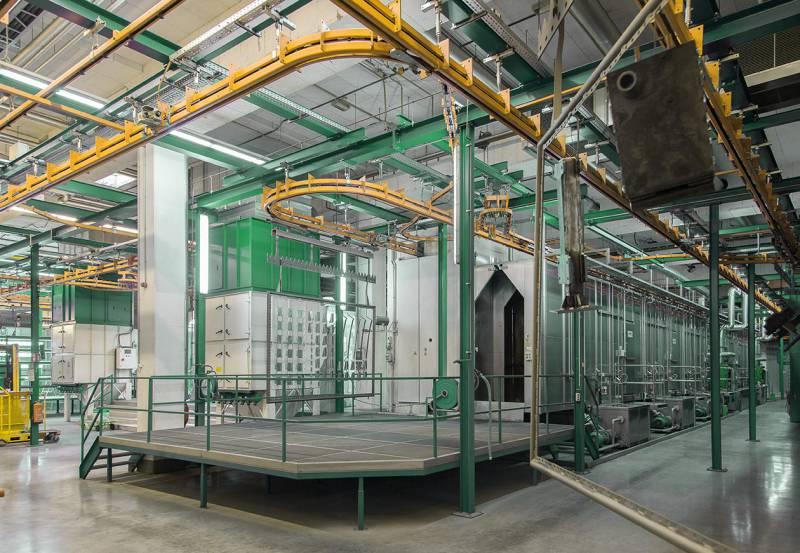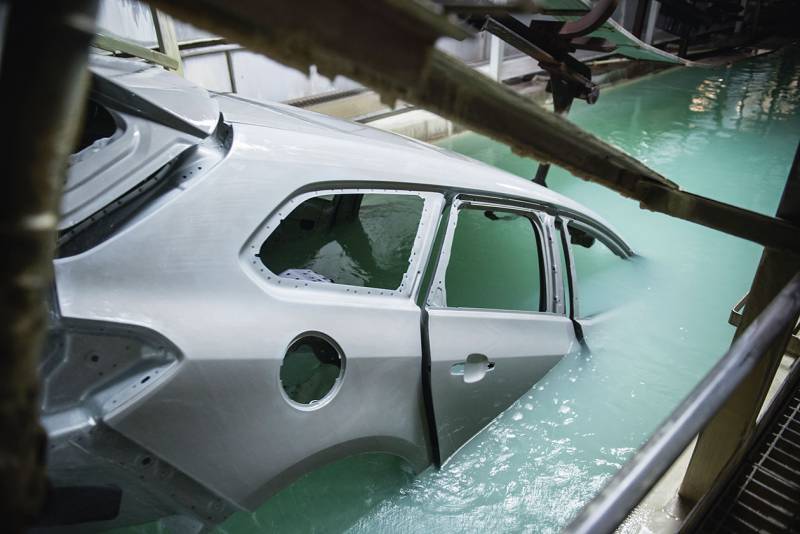Everything About Function and Application
Powder coating is a finely ground mixture of pigments, binders, fillers, and additives. In surface finishing, it is used for metal coating. During application, the powder is electrostatically charged and attracted to metal surfaces. There, it adheres until heat treatment fuses and cross-links it into a durable, tightly bonded layer on the surface. One advantage of powder coating is the absence of solvents, which would otherwise contribute to air pollution.
The Functions of Powder Coating Components
Pigments Provide Color
Pigments are responsible for the color in powder coating. Inorganic pigments best withstand the high cross-linking temperatures. These include metal oxides, either naturally occurring or synthetically produced. These colorful minerals have long been used in painting and glassmaking. For example, powder coating owes its brilliant white to titanium oxide. Iron oxides produce yellow, red, or black. Cobalt oxides are known for intense blues, while chromium oxide gives a green coloration.
Alongside inorganic pigments, organic dyes are also used in powder coatings. These originate from natural sources as well. Examples include indigo from the woad plant or purple, once derived from certain snails. In surface technology, temperature-resistant synthetic organic dyes are used to achieve bright, glossy colors.
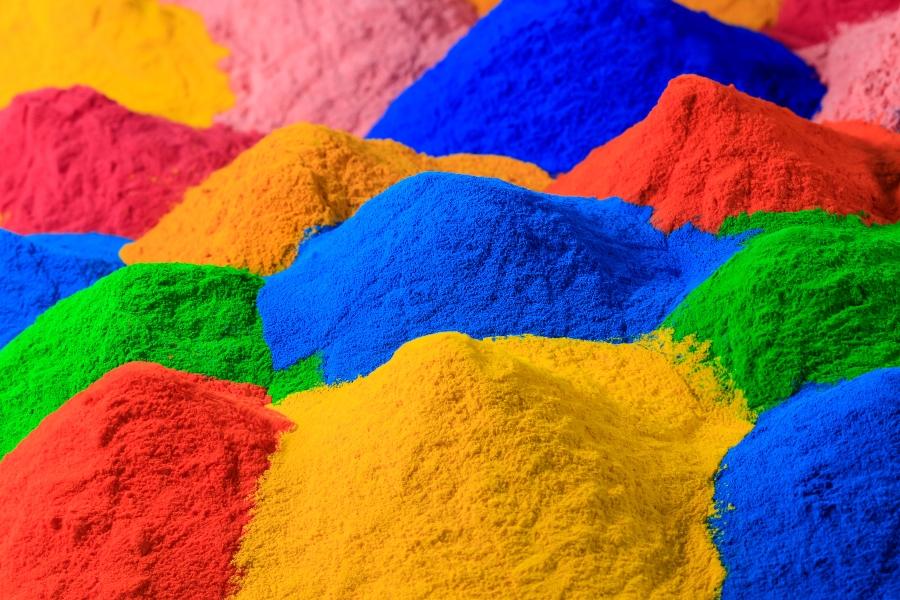
Fillers Add Volume and Improve Corrosion Resistance
Fillers such as chalk, talc, or barium sulfate add volume to the coating layer and optimize particle size distribution in the powder. This ensures maximum packing density: smaller pigment particles distribute evenly in the spaces between larger filler particles. This layer structure enhances the corrosion protection of the powder coating.
Additives Ensure Quality and Surface Texture
Additives optimize processes such as surface pretreatments, create gloss or intentional texture effects, and provide the required hardness of the coating. Flow agents and degassing additives are especially important. Flow agents lower surface tension, producing a smooth, defect-free layer. Degassing additives channel gaseous reaction products to the surface, preventing pinholes in the coating. Special structuring agents can be used to achieve velvety, porous, or wavy effects.
Binders Hold It All Together
Binders give powder coatings their strength. They provide resistance to mechanical, chemical, and weathering stresses. Their function develops during the final curing stage in the oven, where they form cross-linked three-dimensional structures that lock in all other components.
Binders that are often used include epoxies or polyester resins, frequently combined in hybrid systems. Polyurethane, PVC, polyamide, or acrylic binders are also possible. Epoxy and cured polyester resins create thermosetting plastics with excellent mechanical properties, high chemical resistance, and strong weatherability.
Polyurethanes, thanks to their strong adhesion, are well suited for primers. Their widespread use as clear coats and topcoats is due to their resistance to chemicals, solvents, and weathering.
The Powder Coating Process in Surface Technology
Powder coating involves three steps: surface pretreatment, powder application, and curing.
Pretreatment
Surfaces are cleaned and usually given a conversion coating. The conversion coating is formed through a chemical reaction between the metal and an acid. Steel and iron metals often receive phosphate layers. The surface of galvanized steel and aluminum is typically prepared for powder coating by chromating or anodizing. The conversion coating improves corrosion protection and provides a firm adhesion base for the powder coating. The pretreatment ends with thorough drying of the parts.
Powder Application
For application (also called deposition), the powder particles are electrostatically charged, either by friction (triboelectric charging) or by ionization (corona application). In tribo systems, Teflon-coated spray guns use compressed air to charge the particles by friction. The spray gun atomizes the particles into a powder cloud, which is then attracted to the grounded workpiece. Multiple layers can be applied evenly in this way, and the process is highly suitable for automation.
In corona application, the particles pass by an electrode that ionizes the surrounding air at 30–100 kV. The resulting glow, known as the corona effect, gives the process its name. The charged air forms a cloud together with the powder. This method consumes less air and, therefore, causes less wear on the spray guns. It is predominantly used for effect powders that cannot be triboelectrically charged.
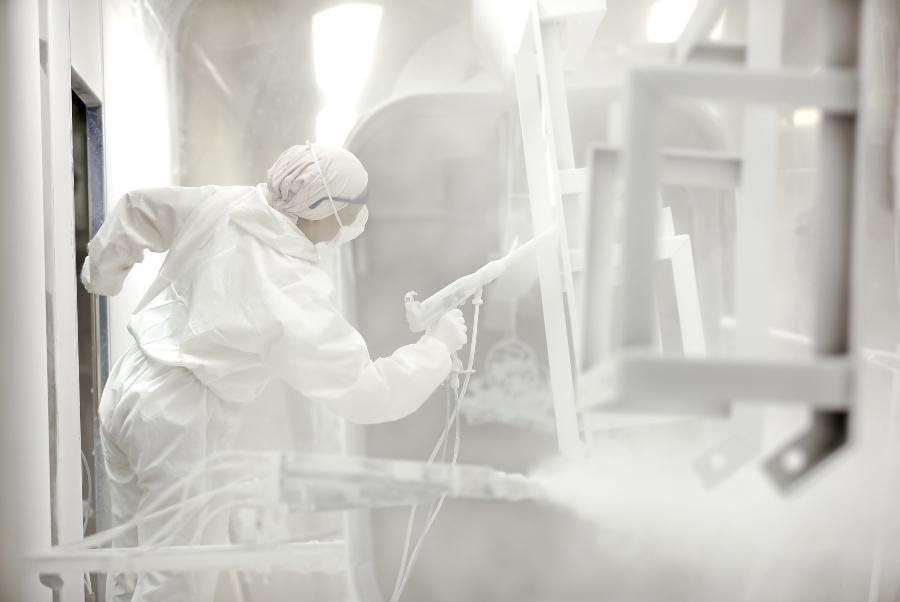 © Fotolia RAW – stock.adobe.com[/caption>
© Fotolia RAW – stock.adobe.com[/caption>
Curing
Curing—also called baking or drying in surface technology—takes place at 230–480 °F (110–250 °C). The powder melts and forms a solid layer. Temperature control is crucial to coating quality. First, a short heat-up period (depending on layer thickness) brings the coating to curing temperature, followed by a holding time of 5–30 minutes, depending on the binder used.
Applications of Powder Coating
Surface finishing by powder coating is used wherever metals are exposed to wear, weathering, or chemicals. Thanks to the wide range of binders, coatings can be selected for specialized uses such as anti-graffiti protection.
Some powder coatings have increased heat resistance. In addition to their protective role, the ability to create vivid colors and striking textures is a major advantage. The main application area is general metal coating.
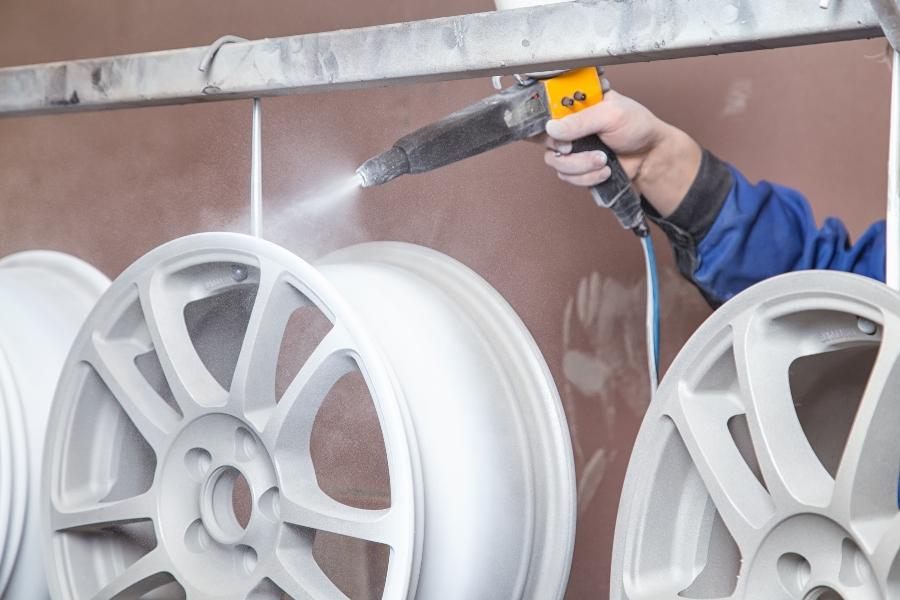 © Chris Tefme – stock.adobe.com[/caption>
© Chris Tefme – stock.adobe.com[/caption>
Construction Industry
In construction, the weather resistance of powder coatings is especially valued. Facades, windows, doors, gates, fences, and railings are given durable protection with these coatings.
Commercial and Agricultural Vehicles and Machinery
These vehicles and machines face harsh operating conditions in addition to weather exposure. Powder-coated components resist wear from water, sand, and dust for extended periods, helping extend equipment service life.
Household Appliances and Furniture
Household appliances such as washing machines, refrigerators, and radiators are designed to withstand frequent cleaning, heavy use, and even occasional impact. Powder coating helps maintain their durability, aesthetic appeal, and long-standing reputation as “white goods”—a term referring to large household appliances, traditionally white in color, like refrigerators and washing machines, known for their reliability and long-term use. Furniture, especially outdoor furniture exposed to the elements, also greatly benefits from long-lasting corrosion protection, preserving both its functionality and appearance.
Automotive Industry
In automotive manufacturing, powder coating is widely used for corrosion protection and finishing of smaller parts, such as wheels, providing effective defense against rust.
 Kluthe Magazine
Kluthe Magazine

